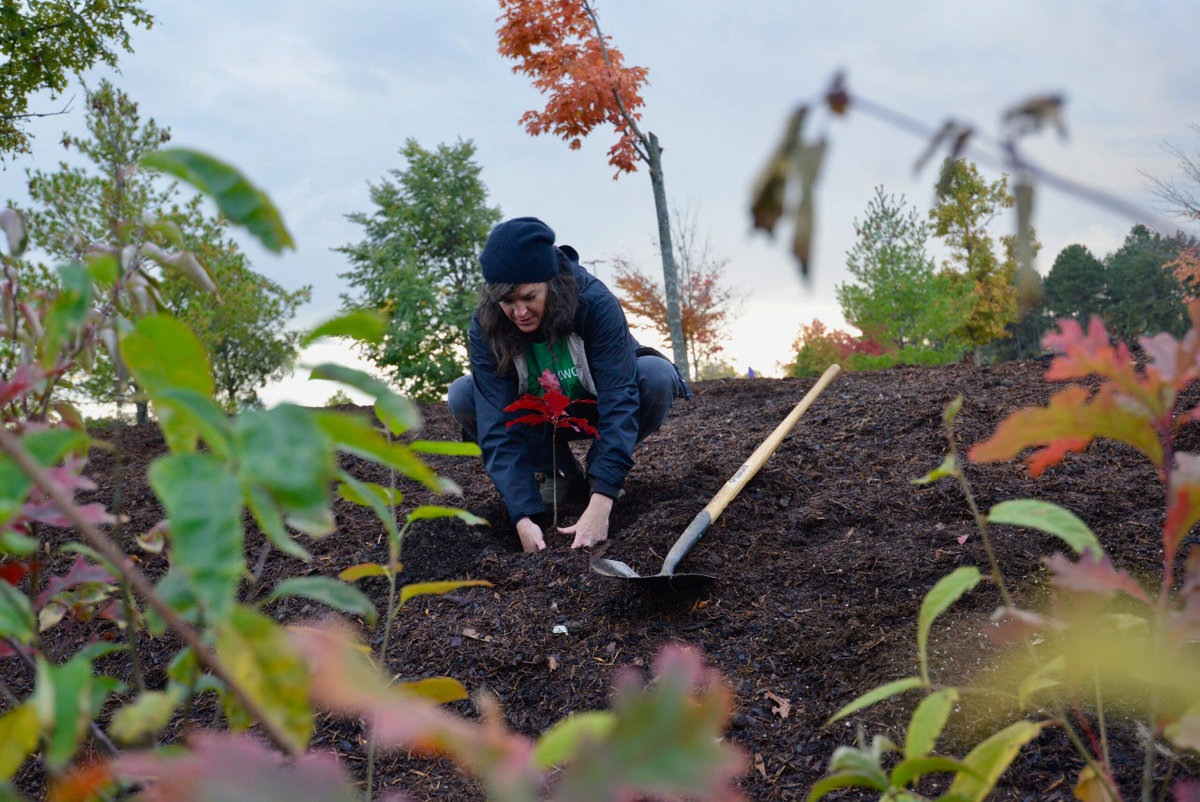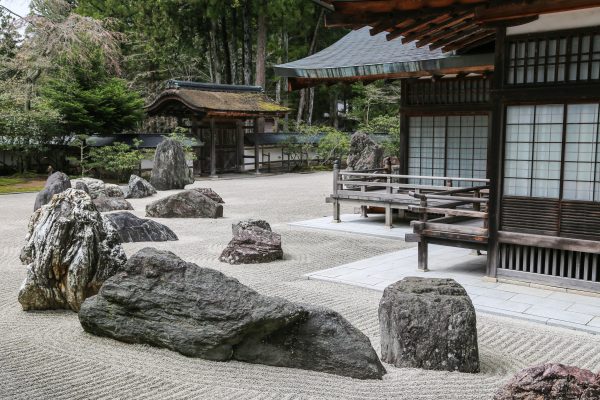Home>Gardening & Outdoor>Plant Care & Gardening Tips>Why Is It Better To Plant Native Plants


Plant Care & Gardening Tips
Why Is It Better To Plant Native Plants
Modified: January 7, 2024
Discover the benefits of planting native plants and get expert plant care and gardening tips. Create a thriving garden ecosystem with native plants.
(Many of the links in this article redirect to a specific reviewed product. Your purchase of these products through affiliate links helps to generate commission for Storables.com, at no extra cost. Learn more)
**
Introduction
**
When it comes to gardening and landscaping, the choice of plants can significantly impact the health of your garden and the surrounding environment. One increasingly popular approach is to incorporate native plants into your garden. Native plants are those that naturally occur in a particular region, having evolved in that specific environment over thousands of years. This adaptation means they are well-suited to the local climate, soil, and wildlife, making them an excellent choice for any garden.
The benefits of planting native species are manifold, ranging from environmental conservation to the creation of sustainable and low-maintenance gardens. In this article, we will explore the numerous advantages of choosing native plants, not only for the beauty they bring to your outdoor space but also for the positive impact they have on local ecosystems. Additionally, we will delve into the ways in which you can incorporate native plants into your garden, fostering a harmonious and thriving natural environment. Let's embark on a journey to discover the wonders of native plants and why they are a superior choice for any garden.
**
Key Takeaways:
- Embracing native plants in your garden supports local wildlife, conserves water, and requires less maintenance, creating a vibrant and sustainable ecosystem.
- Native plants play a crucial role in preserving biodiversity, supporting wildlife, and maintaining the health of natural environments, contributing to a sustainable future.
What Are Native Plants?
**
Native plants are species that have naturally evolved in a specific region over thousands of years. These plants have adapted to the local climate, soil, and environmental conditions, making them uniquely suited to thrive in their native habitats. They play a crucial role in maintaining the ecological balance of their respective regions, providing food and shelter for local wildlife while contributing to the overall health of the ecosystem.
One of the defining characteristics of native plants is their ability to coexist harmoniously with the surrounding environment. They have developed natural defenses against local pests and diseases, reducing the need for chemical pesticides and fertilizers. Additionally, native plants have deep root systems that help prevent soil erosion and improve water retention, making them valuable assets in sustainable landscaping and conservation efforts.
Native plants encompass a wide variety of species, including trees, shrubs, flowers, grasses, and groundcovers. Each type of native plant offers unique benefits to the local ecosystem, from providing nectar for pollinators to serving as host plants for butterflies and other insects. By incorporating a diverse array of native plants into your garden, you can create a thriving ecosystem that supports and sustains local wildlife while enhancing the natural beauty of your outdoor space.
Furthermore, native plants are an essential part of the cultural and historical identity of a region. They often hold significance in indigenous traditions and have been used for medicinal, culinary, and ceremonial purposes for generations. By cultivating native plants in our gardens, we can honor and preserve the rich heritage and biodiversity of our local landscapes.
Overall, native plants are an invaluable resource for gardeners, conservationists, and nature enthusiasts alike. Their resilience, adaptability, and ecological significance make them a cornerstone of sustainable landscaping and environmental stewardship.
**
Benefits of Planting Native Plants
**
Choosing native plants for your garden offers a multitude of benefits that extend far beyond aesthetic appeal. These plants have evolved to thrive in specific regions, making them uniquely equipped to enhance the health of your garden and the surrounding environment. Here are some of the key advantages of planting native species:
-
Low Maintenance: Native plants are well-adapted to local environmental conditions, requiring minimal intervention once established. Their natural resilience reduces the need for excessive watering, fertilization, and pest control, resulting in a low-maintenance and sustainable garden.
-
Water Conservation: Many native plants have evolved to survive in their native habitats without requiring extensive irrigation. By incorporating drought-tolerant native species into your garden, you can conserve water resources and promote sustainable landscaping practices.
-
Wildlife Habitat: Native plants provide essential food and shelter for local wildlife, including birds, butterflies, bees, and other pollinators. By creating a habitat rich in native flora, you can attract and support a diverse array of beneficial wildlife species, contributing to the overall biodiversity of your garden.
-
Erosion Control: The deep root systems of native plants help stabilize soil, preventing erosion and runoff. This is particularly valuable in landscaping projects aimed at controlling erosion in natural areas or along waterways.
-
Pollinator Support: Many native plants have co-evolved with local pollinators, providing them with the nectar, pollen, and host plants they need to thrive. By cultivating native flowers and shrubs, you can actively support the health and diversity of pollinator populations in your area.
-
Biodiversity Preservation: Planting native species helps preserve and restore the natural biodiversity of your region. By reintroducing indigenous plants to the landscape, you can contribute to the conservation of endangered or threatened species while creating a more resilient and ecologically balanced environment.
-
Resilience to Climate Variability: Native plants are adapted to the specific climate and weather patterns of their native regions, making them more resilient in the face of climate change and extreme weather events. Their ability to withstand local environmental stressors contributes to the overall sustainability of your garden.
In summary, the benefits of planting native plants extend beyond individual gardens, positively impacting the broader ecosystem and contributing to environmental sustainability. By embracing native species, gardeners can create vibrant, biodiverse landscapes that support local wildlife and contribute to the preservation of natural habitats.
**
Importance of Native Plants for Ecosystems
**
Native plants play a pivotal role in maintaining the health and stability of ecosystems, providing a wide range of ecological benefits that support biodiversity and environmental sustainability. Their significance extends beyond their ornamental value, influencing the intricate web of life within natural habitats. Here are several ways in which native plants contribute to the vitality of ecosystems:
-
Wildlife Support: Native plants provide essential food sources, nesting sites, and shelter for a diverse array of wildlife species, including birds, insects, small mammals, and amphibians. By cultivating native flora, gardeners can actively contribute to the preservation of critical wildlife habitats and the conservation of indigenous species.
-
Pollinator Habitats: Many native plants have co-evolved with local pollinators, forming intricate relationships that are essential for the reproduction of both plants and pollinators. By providing nectar, pollen, and host plants, native flora sustains the health and diversity of pollinator populations, including bees, butterflies, moths, and hummingbirds.
-
Soil Health: The deep root systems of native plants help improve soil structure, prevent erosion, and enhance water retention. These plants play a crucial role in stabilizing soil, reducing the risk of erosion, and maintaining the overall health and fertility of the land.
-
Water Quality: Native plants contribute to the purification and conservation of water resources. Their root systems help filter pollutants, reduce runoff, and prevent soil erosion, thereby improving the quality of water in rivers, lakes, and aquifers.
-
Ecological Balance: Native plants are integral to the intricate balance of ecosystems, providing the foundation for complex food webs and ecological interactions. They support a diverse array of organisms, from soil microbes to apex predators, contributing to the overall stability and resilience of natural habitats.
-
Climate Resilience: Native plants are well-adapted to local climate conditions, making them more resilient in the face of climate variability and extreme weather events. By preserving and restoring native plant communities, we can enhance the capacity of ecosystems to withstand environmental stressors and adapt to changing climatic conditions.
Overall, the importance of native plants for ecosystems cannot be overstated. By fostering biodiversity, supporting wildlife, and contributing to the overall health of natural environments, native plants play a vital role in sustaining the delicate balance of ecosystems and preserving the beauty and functionality of the natural world.
**
Tip: Planting native plants helps support local ecosystems, as they provide food and habitat for native wildlife, require less maintenance, and are better adapted to local climate and soil conditions.
Conservation of Native Plants
**
Conservation efforts aimed at preserving native plants are essential for safeguarding biodiversity, restoring degraded landscapes, and protecting the integrity of natural ecosystems. As human activities continue to impact the environment, the conservation of native plant species becomes increasingly critical. Here are several key aspects of native plant conservation:
-
Habitat Preservation: Protecting the natural habitats where native plants thrive is fundamental to their conservation. Preserving diverse ecosystems, such as forests, grasslands, wetlands, and coastal areas, ensures the survival of native plant species and the myriad of organisms that depend on them.
-
Threatened and Endangered Species: Many native plant species are classified as threatened or endangered due to habitat loss, invasive species, overexploitation, and other factors. Conservation efforts focus on identifying and protecting these at-risk species, often through habitat restoration, propagation, and reintroduction programs.
-
Invasive Species Management: Invasive plants pose a significant threat to native ecosystems, outcompeting indigenous flora and disrupting ecological balance. Conservation initiatives aim to control and eradicate invasive species, allowing native plants to thrive and reclaim their natural habitats.
-
Seed Banks and Propagation: Seed banks and botanical gardens play a crucial role in preserving genetic diversity and propagating native plant species. By collecting, storing, and cultivating seeds, conservationists can safeguard the genetic heritage of native plants and support reintroduction efforts in the wild.
-
Public Awareness and Education: Raising awareness about the value of native plants and the importance of conservation is an integral part of preserving these species. Educational programs, community initiatives, and outreach efforts help foster a deeper appreciation for native flora and inspire collective action to protect and restore natural ecosystems.
-
Legislative Protection: Legal frameworks and regulations play a crucial role in safeguarding native plant species and their habitats. Designating protected areas, enacting conservation laws, and implementing measures to prevent the illegal trade of endangered plant species are essential components of native plant conservation.
Ultimately, the conservation of native plants is a multifaceted endeavor that requires collaboration among government agencies, conservation organizations, community groups, and individual citizens. By prioritizing the preservation of native plant species and their habitats, we can contribute to the resilience and sustainability of our natural environment, ensuring that future generations can continue to benefit from the beauty and ecological richness of native flora.
**
How to Incorporate Native Plants in Your Garden
**
Incorporating native plants into your garden is a rewarding endeavor that not only enhances the beauty of your outdoor space but also contributes to the conservation of local ecosystems. Whether you are starting a new garden or seeking to enrich an existing landscape, here are some practical tips for integrating native plants into your garden:
-
Research Local Species: Begin by researching native plant species that are indigenous to your specific region. Consider factors such as soil type, sunlight exposure, and climate conditions to identify plants that are well-suited to thrive in your local environment.
-
Plan for Diversity: Aim to create a diverse garden that incorporates a variety of native trees, shrubs, flowers, and grasses. By embracing diversity, you can provide a range of habitats and food sources for local wildlife while enhancing the visual appeal of your garden.
-
Understand Planting Zones: Familiarize yourself with the planting zones and microclimates in your area to select native plants that are best adapted to your specific location. This knowledge will help you create optimal growing conditions for each species within your garden.
-
Consider Seasonal Interest: Choose native plants that offer seasonal interest, including spring blooms, summer foliage, fall colors, and winter structure. By incorporating a mix of plants with varying seasonal characteristics, you can create a dynamic and visually engaging garden throughout the year.
-
Support Wildlife: Select native plants that provide food and shelter for local wildlife, including nectar-rich flowers for pollinators, berry-producing shrubs for birds, and host plants for butterflies and moths. Creating a wildlife-friendly garden fosters a thriving ecosystem within your own backyard.
-
Embrace Natural Landscaping: Integrate native plants into your garden in a way that mimics natural landscapes. Consider incorporating meadows, woodland edges, and water-wise plantings to create a harmonious and ecologically rich environment that mirrors the beauty of local ecosystems.
-
Partner with Native Grasses: Incorporate native grasses and groundcovers to add texture, structure, and resilience to your garden. These plants are well-adapted to local soil and climate conditions, providing erosion control and habitat for a variety of wildlife species.
-
Seek Expert Advice: Consult with local nurseries, botanical gardens, or native plant societies to gain insights from experts who specialize in native flora. They can provide valuable guidance on plant selection, garden design, and maintenance practices tailored to your region.
By following these guidelines and embracing the beauty and ecological significance of native plants, you can create a garden that not only thrives in harmony with nature but also contributes to the conservation of local ecosystems. Embracing native flora is a meaningful way to connect with the natural world and celebrate the unique heritage of your region.
**
Conclusion
**
The incorporation of native plants into gardens is a transformative practice that holds immeasurable benefits for both the natural world and those who cultivate these living landscapes. By understanding the unique attributes of native plants and their profound impact on ecosystems, we can make informed choices that support biodiversity, conservation, and sustainable gardening practices.
Native plants offer a wealth of advantages, from low-maintenance landscaping and water conservation to the creation of vibrant wildlife habitats and the preservation of cultural heritage. Their resilience, adaptability, and ecological significance make them indispensable allies in the quest for environmental stewardship and the restoration of natural balance.
As we embrace the beauty and functionality of native flora, we become active participants in the preservation of our natural heritage. By cultivating diverse gardens that reflect the richness of local ecosystems, we can foster a deeper connection with the land and the myriad of life forms it sustains. Through our collective efforts to conserve and restore native plant communities, we can contribute to the resilience and sustainability of the environments we call home.
In essence, the integration of native plants into our gardens is a testament to our commitment to the well-being of the planet and all its inhabitants. It is a celebration of the intricate relationships that define the natural world and a pledge to nurture and protect the landscapes that nurture us in return. By choosing native plants, we embark on a journey of discovery, stewardship, and reverence for the extraordinary tapestry of life that surrounds us.
Let us continue to sow the seeds of conservation, embracing native plants as ambassadors of ecological harmony and champions of a sustainable future. With each native plant we nurture, we sow the seeds of resilience, biodiversity, and enduring beauty, leaving a lasting legacy for generations to come.
Frequently Asked Questions about Why Is It Better To Plant Native Plants
Was this page helpful?
At Storables.com, we guarantee accurate and reliable information. Our content, validated by Expert Board Contributors, is crafted following stringent Editorial Policies. We're committed to providing you with well-researched, expert-backed insights for all your informational needs.















0 thoughts on “Why Is It Better To Plant Native Plants”